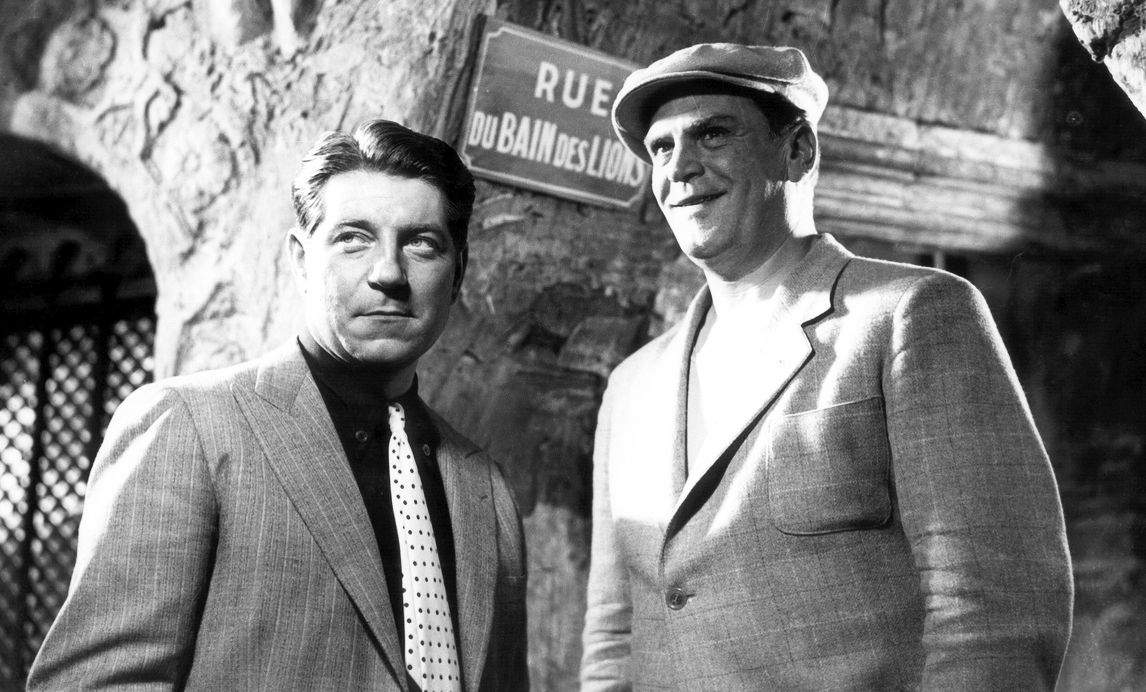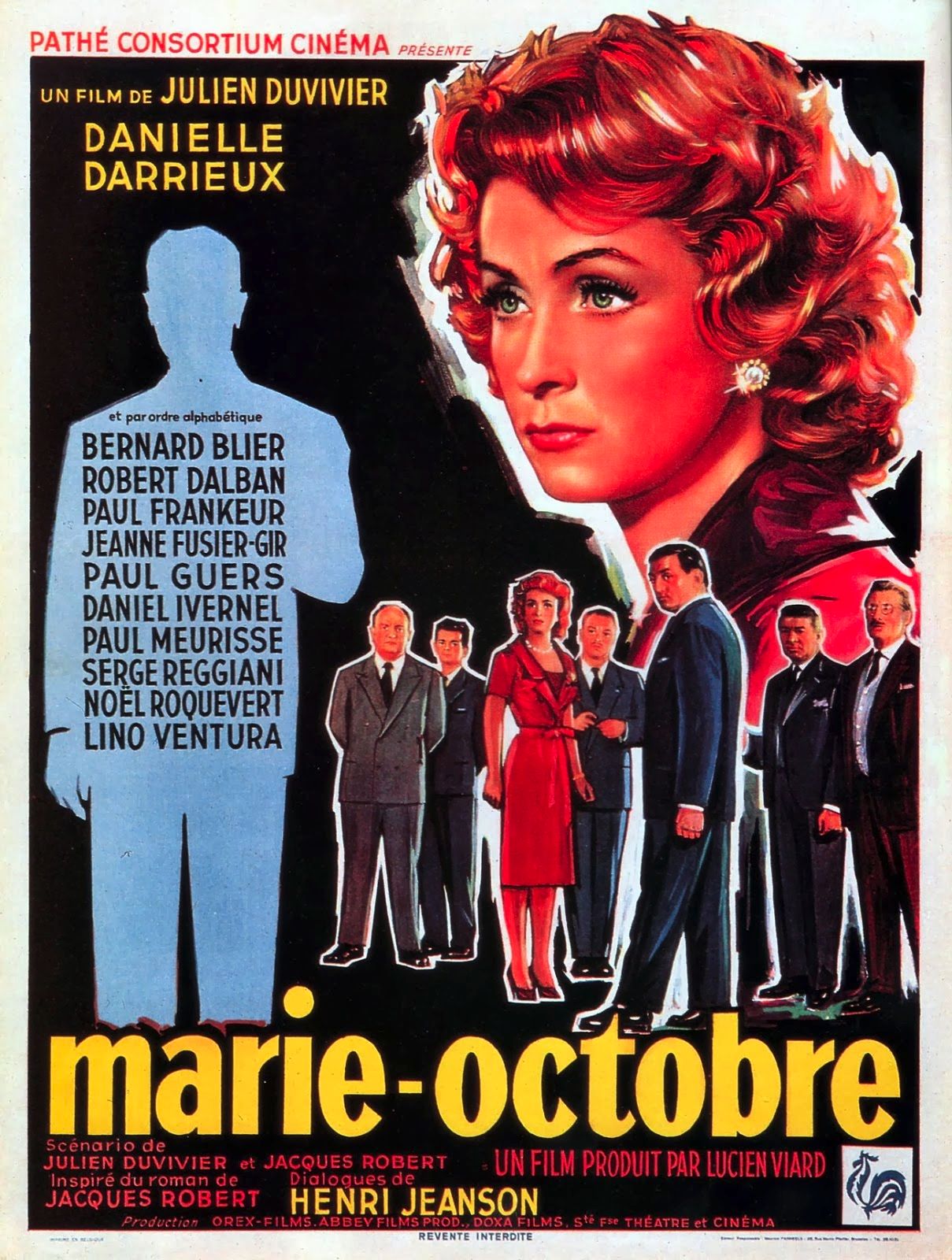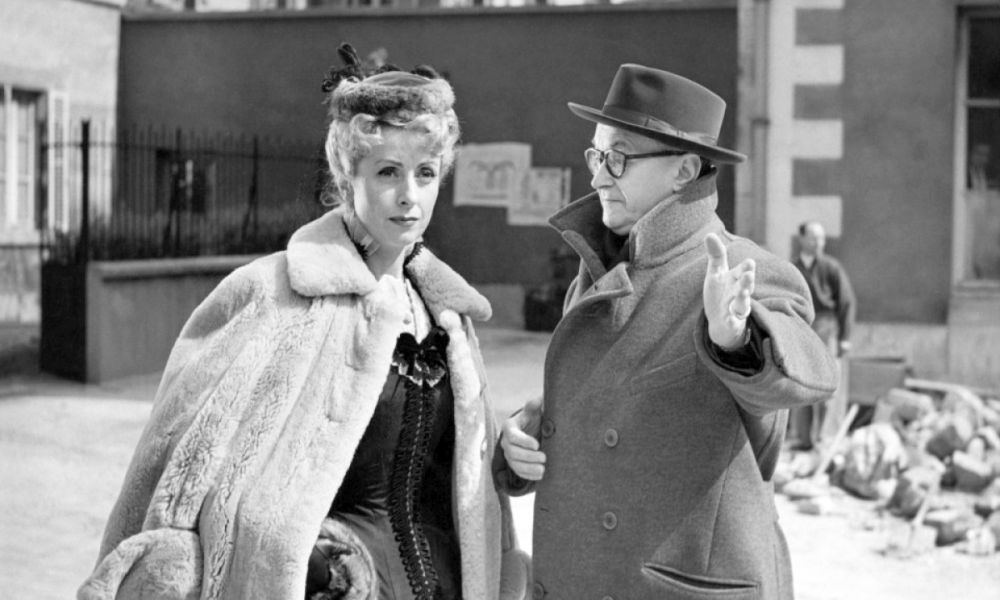"His films of the 20s gained little notice, but in the 30s he gradually emerged as one of the 'Big Five' of French cinema, alongside René Clair, Jacques Feyder, Jean Renoir, and Marcel Carné… His career as director spanned almost 50 years, paralleling the development of French cinema, from Feuillade to Godard." - The Film Encyclopedia, 2012
Julien Duvivier
Director / Screenwriter / Producer
(1896-1967) Born October 3, Lille, Nord, France
(1896-1967) Born October 3, Lille, Nord, France
Key Production Countries: France, Italy, USA, West Germany
Key Genres: Drama, Comedy Drama, Melodrama, Romantic Drama, Crime Drama, Ensemble Film
Key Collaborators: Marthe Poncin (Editor), Armand Thirard (Cinematographer), Henri Jeanson (Screenwriter), Harry Baur (Leading Actor), Pierre O'Connell (Producer), Marcel Vandal (Producer), Charles Delac (Producer), Arys Nissotti (Producer), Jacques Krauss (Production Designer), Jean Gabin (Leading Actor), Charles Spaak (Screenwriter), Jean Wiener (Composer)
Key Genres: Drama, Comedy Drama, Melodrama, Romantic Drama, Crime Drama, Ensemble Film
Key Collaborators: Marthe Poncin (Editor), Armand Thirard (Cinematographer), Henri Jeanson (Screenwriter), Harry Baur (Leading Actor), Pierre O'Connell (Producer), Marcel Vandal (Producer), Charles Delac (Producer), Arys Nissotti (Producer), Jacques Krauss (Production Designer), Jean Gabin (Leading Actor), Charles Spaak (Screenwriter), Jean Wiener (Composer)
"An evocative stylist whose films in the school of poetic realism have gained him a rightful place in cinema history (Pepe le Moko, 37; Un Carnet de Bal, 37), Duvivier never regained his stride after a sojourn in Hollywood during World War II." - William R. Meyer (The Film Buff's Catalog, 1978)
“Prolific, competent craftsman whose career lasted almost five decades; best remembered for the film noir precursor Pépé le Moko (1936) and the superb slice of poetic realism Un Carnet de Bal (1937). Duvivier made occasional American movies as well as the British Anna Karenina (1948, with Vivien Leigh).” - The Virgin International Encyclopedia of Film, 1992

Pépé le Moko (1937)
"Imperturbably professional, he directed some fifty films, most of which he scripted or co-scripted. Duvivier had a flair for the melodramatic, and - lacking the strong personality of Renoir or Clair - fitted in well with American film production methods. His films of the 1930s (including Pépé le Moko in 1937) were important in the development of 'poetic realism', in which the authentic depiction of different social milieux is pervaded by romantic and poetic elements" - The Movie Book, 1999
"Like his Hollywood contemporaries Raoul Walsh, Michael Curtiz and William Wyler, Duvivier could turn his hand to any genre, and imbue each assignment with a set of arresting visuals or deft narrative turns while still serving the film’s source material as efficiently as possible. Here is a director of range, adaptability and know-how, yet attempting to define the ‘Duvivier style’ can be a frustrating exercise. He made nearly seventy films, but resolutely refused to be labelled an auteur." - Ben McCann (Senses of Cinema, 2017)
"Distinguished French director of elegant and nostalgic romances, who attained his peak period in the 1930s and made several high-toned melodramas in Hollywood just before and during the Second World War, although they lacked the quality of his French films… The quintessence of Duvivier's style is to be found in Pépé le Moko and Un Carnet de Gal (1937); but it did not travel well and, in America, his Great Waltz (1938), Tales of Manhattan (1942), Flesh and Fantasy (1943) tended to be over-ornate and only passingly successful." - Margaret Hinxman (The International Encyclopedia of Film, 1972)
"Julien Duvivier was directing from 1919 until his death, in a car accident, in 1967… His later work was openly commercial, and modern critics tend to find him lacking in individuality. But at the very least, he was a superb coordinator of the talents of others." - The Illustrated Who's Who of the Cinema, 1983
"No one speaks of Julien Duvivier without apologizing. So many of his fifty-odd films are embarrassing to watch that it is hard to believe he was ever in charge of his career in the way we like to imagine Renoir or Clair were in charge of theirs… Believing far more in experience, planning, and hard work than in spontaneity and genius, Duvivier never relaxed. Every film taught him something and, by rights, he should have ended a better director than ever. But he will be remembered for those five years in the late 1930s, a period when every choice he made in the realms of script and direction was in tune with the romantically pessimistic sensibility of the country." - Dudley Andrew (International Dictionary of Films and Filmmakers, 2000)
"Although he continued to direct until the year of his death, Duvivier's best work was done in his native France during the mid-30's and includes La Bandera (1934), Le Golem (1935) and Pépé le Moko (1936)." - The Movie Makers, 1974
“Directed his first film in 1919 and continued to make smooth, tasteful, decorative, undemanding films right up to his death. His five films with Jean Gabin in the 30's were his best work, especially Pépé le Moko (1937) set in the teeming studio-constructed Casbah of Algiers.” - Ronald Bergan (A-Z of Movie Directors, 1983)
"One of the great French directors of the classical era, Duvivier was revered in the 1930s but later unfavourably compared with Jean Renoir." - Ginette Vincendeau (Encyclopedia of European Cinema, 1995)
"Genius is just a word; filmmaking is a craft." - Julien Duvivier
Selected Filmography
{{row.titlelong}}
Julien Duvivier / Favourite Films
Battleship Potemkin (1925) Sergei Eisenstein, Bicycle Thieves (1948) Vittorio De Sica, The Cabinet of Dr. Caligari (1919) Robert Wiene, Intolerance (1916) D.W. Griffith, Melody of the World (1929) Walter Ruttmann, Moana (1926) Robert Flaherty, Mother (1926) Vsevolod Pudovkin, The Passion of Joan of Arc (1928) Carl Theodor Dreyer, Le Voyage dans la lune (1902) Georges Méliès, A Woman of Paris (1923) Charles Chaplin.
Source: Cinematheque Belgique (1952)
Battleship Potemkin (1925) Sergei Eisenstein, Bicycle Thieves (1948) Vittorio De Sica, The Cabinet of Dr. Caligari (1919) Robert Wiene, Intolerance (1916) D.W. Griffith, Melody of the World (1929) Walter Ruttmann, Moana (1926) Robert Flaherty, Mother (1926) Vsevolod Pudovkin, The Passion of Joan of Arc (1928) Carl Theodor Dreyer, Le Voyage dans la lune (1902) Georges Méliès, A Woman of Paris (1923) Charles Chaplin.
Source: Cinematheque Belgique (1952)
Julien Duvivier / Fan Club
Bertrand Tavernier, Juzaburo Futaba, Seijun Suzuki, Kaneto Shindo, Paul Vecchiali, Wes Anderson, Yasuo Furuhata, Patrice Leconte, Jun'ya Sato, Shin'ichi Ichikawa, Kon Ichikawa, Jacques Audiard.
Bertrand Tavernier, Juzaburo Futaba, Seijun Suzuki, Kaneto Shindo, Paul Vecchiali, Wes Anderson, Yasuo Furuhata, Patrice Leconte, Jun'ya Sato, Shin'ichi Ichikawa, Kon Ichikawa, Jacques Audiard.
"Fan Club"
These film critics/filmmakers have, on multiple occasions, selected this director’s work within film ballots/lists that they have submitted.
These film critics/filmmakers have, on multiple occasions, selected this director’s work within film ballots/lists that they have submitted.


